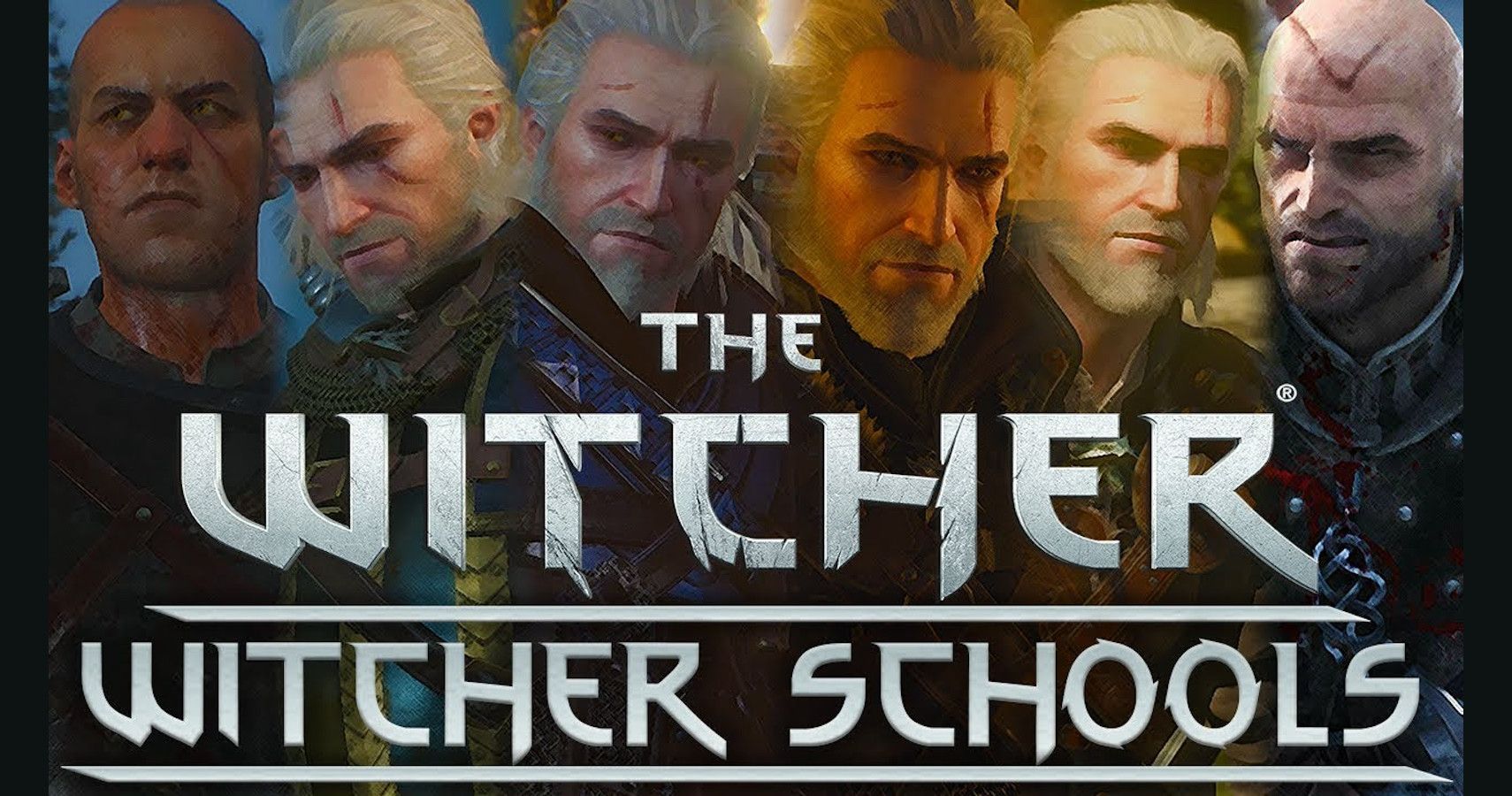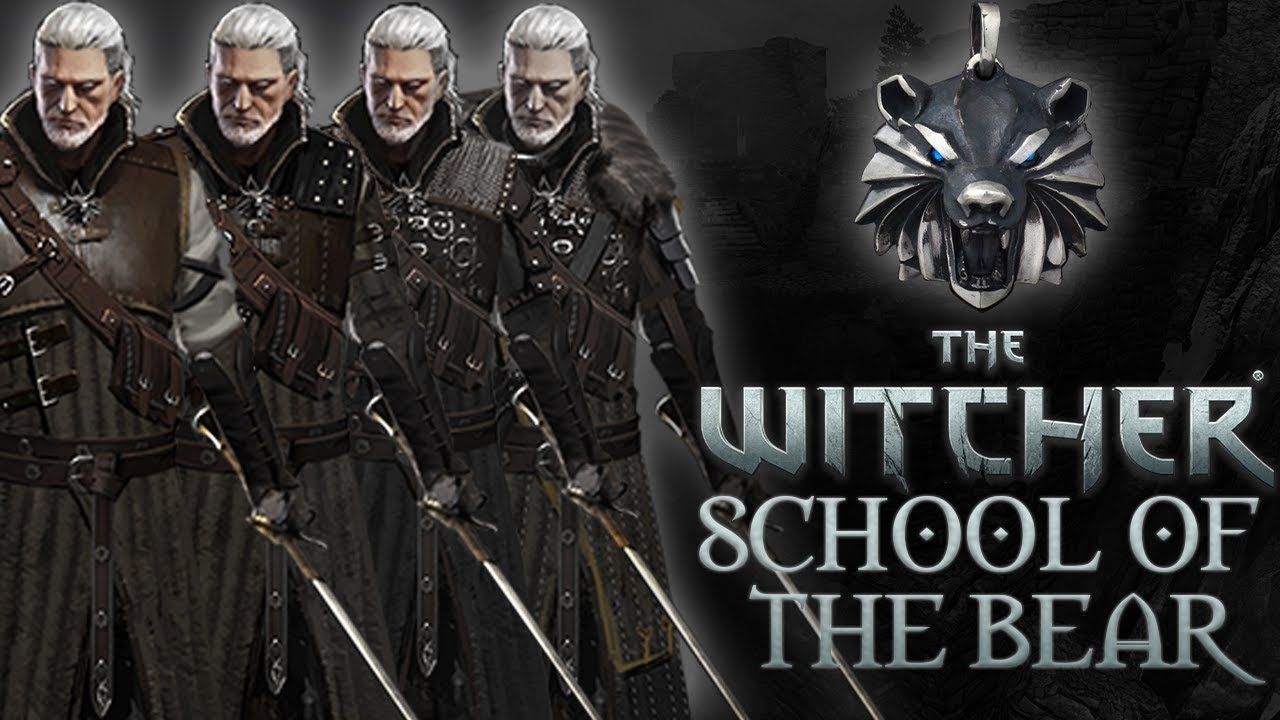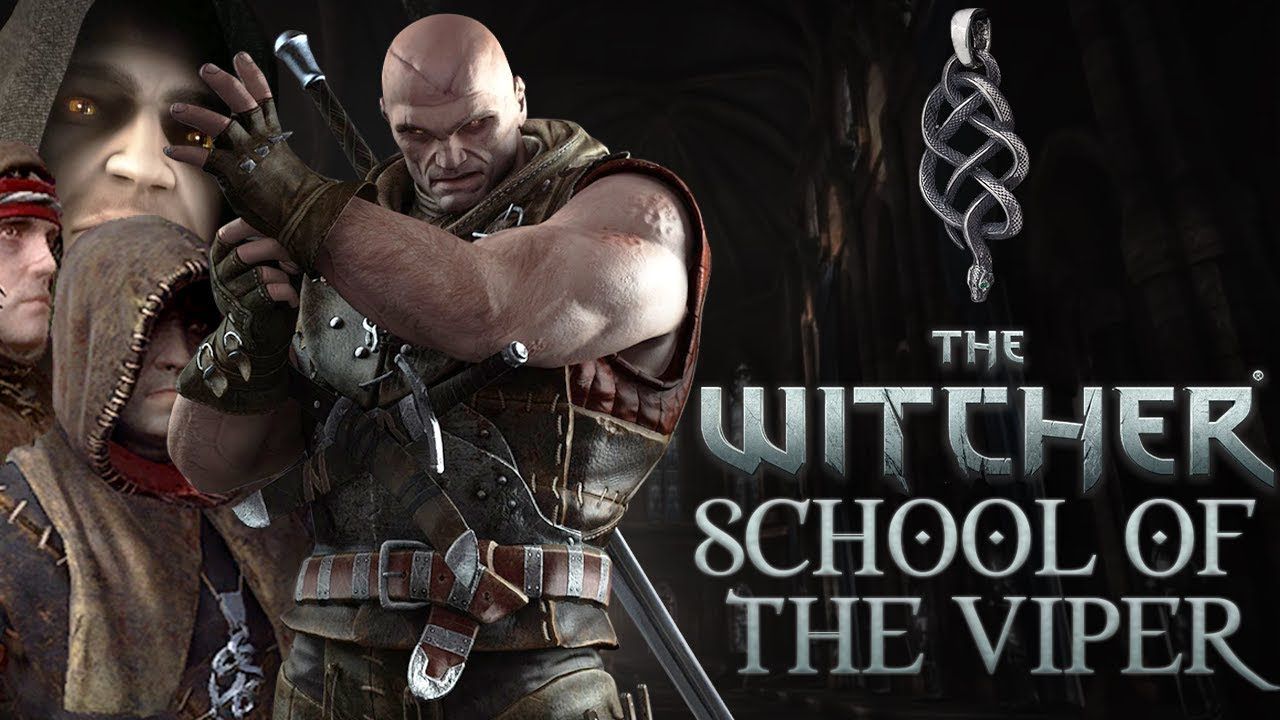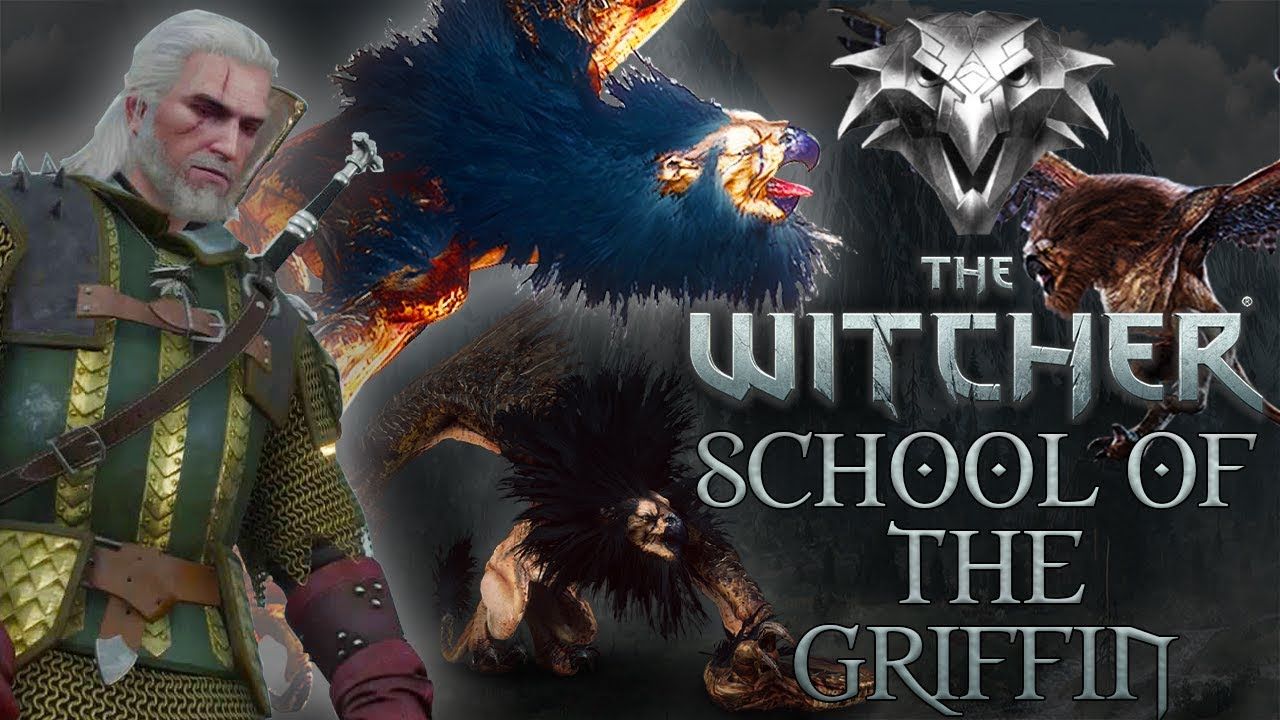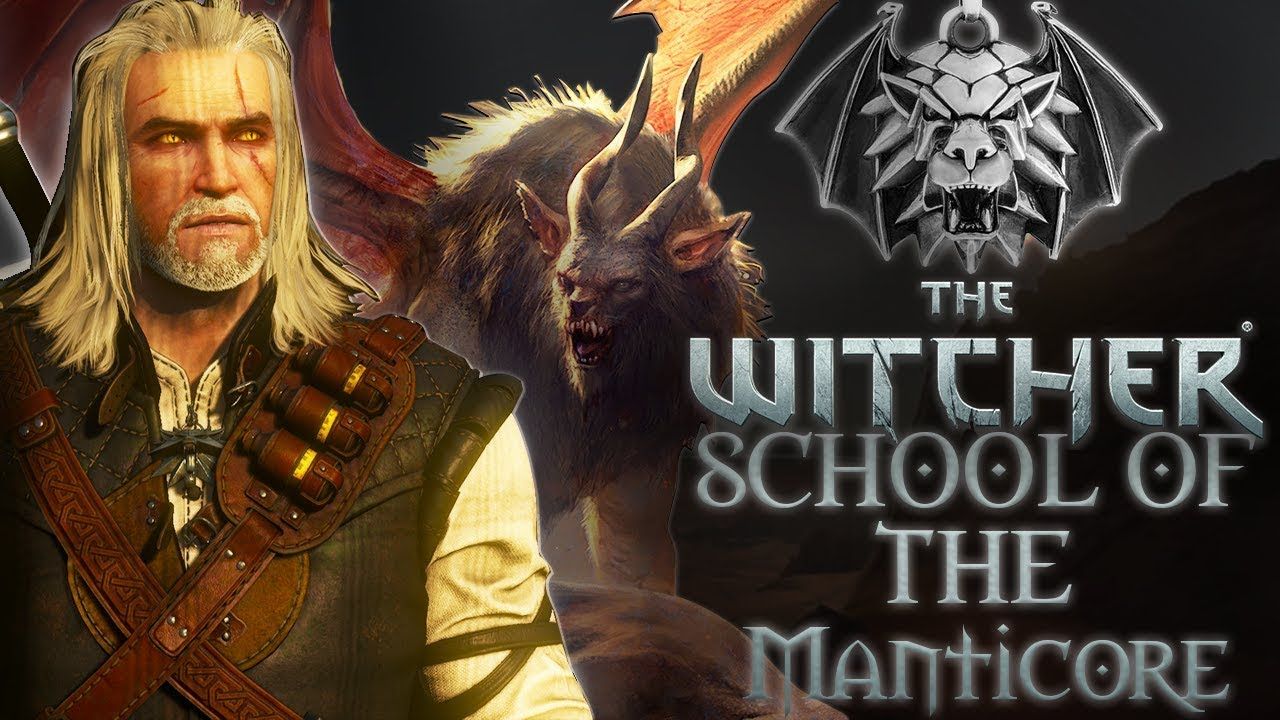By the time the events of The Witcher 3 roll around, the number of witchers in the world has dwindled to just Geralt and a few others. So, many fans who've only jumped in with the most popular entry of the games might not know that there were various schools that used to mutate and train young witchers, each with a different discipline. Geralt of Rivia wasn't born badass - he had to go to school for it, like every other witcher.
Witcher schools aren't canon to Andrzej Sapkowski's source material, but they can be considered game canon at this point. While all schools teach the same base set of skills, each school varies in the fighting techniques they develop. The medallion each witcher wears represents the school in which they trained.
Order of Witchers
The mutating and training of witchers began in the 10th century when kings and their mages endeavored to create a rank of magic-wielding knights, called the Order of Witchers. The hope was these enhanced soldiers would be able to slay the formidable monsters the Nordlings themselves couldn't.
This Order wasn't operational very long, as the results ultimately disappointed most of the rulers. Witchers from the defunct Order gradually split off into the different factions now known as witcher schools, each one adopting a unique and more proficient method of felling monsters.
Wolf School
Kaer Morhen was erected during the 11th century in Kaedwen, amidst Morhen Valley. In-game, it is the most recognized witcher school and the training grounds of the white wolf himself, Geralt of Rivia. Witchers from this school were reputed for their professionalism and reliability in killing monsters.
The school ultimately fell to two politically-motivated massacres, the latter of which involved outside manipulation from the monarchy to pit the Wolves and the school of the Cat against one another, which was never fully resolved. The last students of the wolf school were trained in the 1230s. Though Kaer Morhen was eventually abandoned due to the downfall of the school, a handful of former members including Geralt and Vesemir, would still spend their winters there.
Cat School
The history of the Cat school is long and complex, with many rumors surrounding it. These witchers didn't uphold political neutrality like other schools and became known for their work as assassins more so than monster hunters. It is believed that at one point, the mutations these students underwent were modified at some point, strengthening the subject's emotions rather than muting them. This made the new generation of witchers volatile and bloodthirsty, rising in notoriety until the local kingdoms marched an army into their fortress and forced them out.
The surviving witchers began running the school out of caravans, continuing to sell their services and gaining a reputation as ruthless mercenaries. By the time of the Witcher III, they are the most reviled group of witchers.
Bear School
The Bear School's located in the Amell mountains, which separates Nilfgaard from the Northern Kingdoms. While witcher schools are typically secluded, the Amell mountains are home to dwarves and gnomes, with whom it is stated the Witchers of the Bear School have come to an understanding.
Bear School witchers have abnormally heightened stamina and strength, donning heavy armor in favor of defense over agility. This school eventually saw its downfall much in a similar fashion to other factions: at the hands of riotous people and monarchs who grew distrusting of witchers.
Viper School
The Viper School's located in the Tir Tochair mountains, near the kingdom of Nilfgaard. When the Usurper held the Nilfgaardian throne, he attempted to recruit this faction into his ranks. The witchers refused and the Usurper destroyed the keep, forcing the school to disband. When Emperor Emhyr took power, the Vipers were given an ultimatum and agreed to participate in a couple of political assassinations in return for the restoration of their school. Ultimately, Emhyr did not uphold his end of the agreement and had them hunted down instead. Subsequently, the school is considered extinct.
The school gained their name from their signature style of using dual blades in incalculable strikes, as if with a viper's fangs. They were also famed for their focus on subterfuge and stealth when slaying monsters.
Griffin School
The Griffin School's located in Kaer Seren, near the shoreline of the northern kingdom of Kovir. It is said to have specialized in Signs - the name for witcher magic - to a greater degree than other schools, as well as placing a particular emphasis on social etiquette. The school was taken out by an avalanche, presumed to be the work of envious mages when the witchers refused to divulge their magical lore with them. Though a few witchers of this discipline remain, the school is considered functionally extinct.
The Griffin School trains in a battle style focused on Sign usage and managing multiple opponents. Witchers from the school of the Griffin are said to uphold the knightly etiquette of the old Order and are well respected by other schools.
Manticore School
There isn't a lot known about this school, which was introduced with the Blood and Wine expansions. The game states that it is located near Zerrikania in the Nilfgaardian empire, but not much else. Though, from the properties of the Manticore witcher gear, they may have specialized in alchemy use in battle. Geralt remarks wearing Manticore armor a while back, referencing the fact that the armor resembles his gear from the first Witcher game.
Crane School
Another school with little documentation, it is located somewhere along the eastern coast. The school of the Crane produces a highly unique class of witchers specializing in combat against aquatic and airborne enemies utilizing swords and early guns. They prefer to go unarmored except for when they expect to encounter a sea monster, for which they have a particular approach involving rope and a protective suit.
Spread out across the Continent, each school varies in training techniques and core values, though many of them have fallen to political strife. Though they aren't canon to the original novels, they're certainly an engaging addition to the lore of the games.
Source: Witcher Fandom

